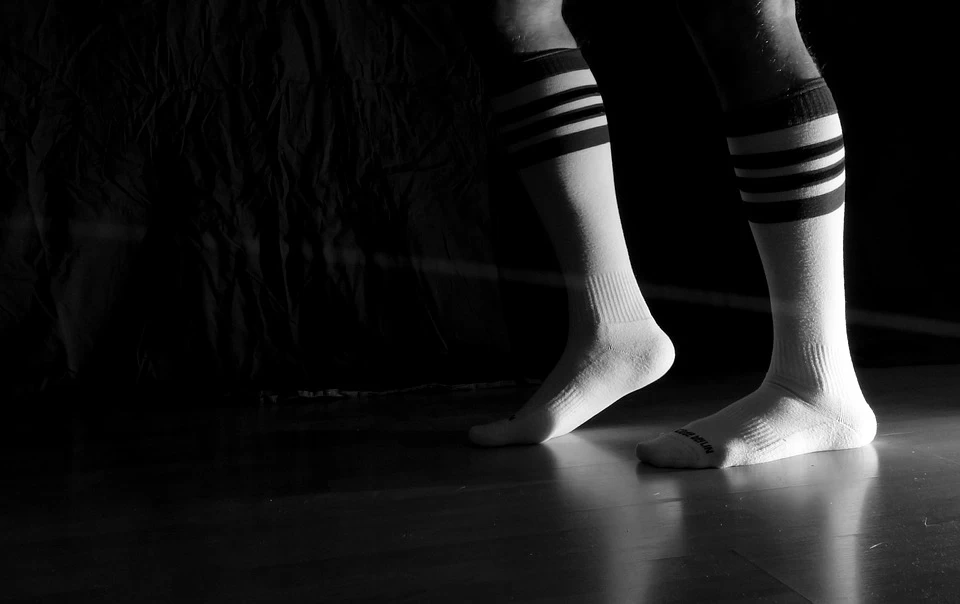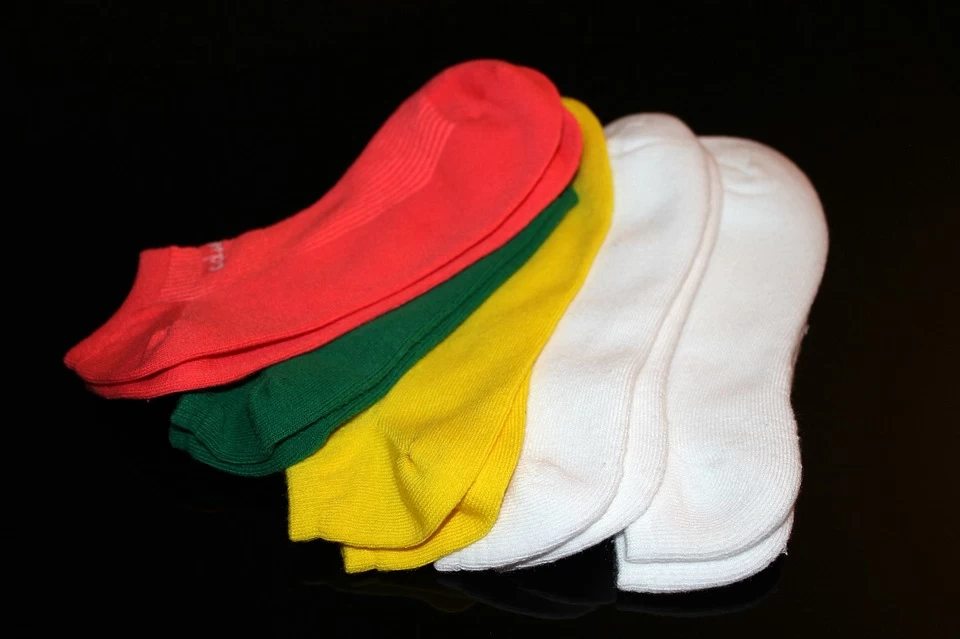How to Choose the Right Socks
aungcrown
Aung Crown
2020-10-22 23:32:31
Socks: they’re the ultimate unwanted Christmas present, or tedious necessity buy. But, wearing the right pair of socks can help your feet stay healthy and comfortable.
Wearing the same socks from work to hiking and everything in between can leave you with sore feet, blisters, and other avoidable problems. Instead, you should choose the right socks for you, depending on when and where you plan to wear them.
We’re here to teach you how to buy socks that meet your needs. Before you know it, you might even start getting excited about shopping for socks! Here are the top things to consider when making your choice.
Socks by Activity
Athletic/multisport socks: This broad category ranges from traditional white gym socks (updated with moisture-wicking fabrics) to technical socks intended for cross-training and running. Most provide some sole cushioning but have minimal bulk overall.


Wearing the same socks from work to hiking and everything in between can leave you with sore feet, blisters, and other avoidable problems. Instead, you should choose the right socks for you, depending on when and where you plan to wear them.
We’re here to teach you how to buy socks that meet your needs. Before you know it, you might even start getting excited about shopping for socks! Here are the top things to consider when making your choice.
Socks by Activity
Athletic/multisport socks: This broad category ranges from traditional white gym socks (updated with moisture-wicking fabrics) to technical socks intended for cross-training and running. Most provide some sole cushioning but have minimal bulk overall.

Running socks: These range from thin liner socks with very little padding to those with dense cushioning in the heel and ball of the foot. Some runners prefer less padding for a better fit in their shoes; others like more padding for added cushioning and reduced foot fatigue.
Walking socks: These offer cushioning and moisture-wicking properties for fitness walkers.
Casual socks: Though distinguished by their casual styling (colors, stripes, etc.), these lightweight socks, at least those found at REI, usually feature performance fabrics such as merino wool.
Lightweight hiking socks: These relatively thin socks provide a good fit for hikers with high-volume feet (i.e., feet that are wide or have a high instep). They wick away moisture and offer modest cushioning in the heel and ball of the foot. They are thinner, especially on the top, than midweight socks and can be worn with or without liner socks.
Midweight backpacking socks: Their additional thickness gives a good fit to hikers with low-volume feet (i.e., feet that are narrow or have a low instep). They offer more padding in the heel and ball of the foot than do lightweight hiking socks, plus cushioning on the top of the foot and leg for comfort on long trails. They can be worn with or without liner socks.
Mountaineering socks: These heavyweight socks are your thickest option, with extra bulk and padding for cold, rugged conditions.
Ski and snowboard socks: These are padded in the shin area and usually underfoot as well. Otherwise, they are thin and not intended to provide significant warmth; rather they are meant to protect your feet from pressure points and rubbing inside the boots. Their design also serves to not interfere with the energy needed to make quick turns.
Material
Socks exist to keep your feet comfortable while wearing shoes. However, the wrong material won’t protect your feet effectively.
Your feet contain lots of sweat glands: about 250,000, to be exact. That’s why your feet tend to get sweaty so fast, and why the wrong fabric can do so much harm. If your socks absorb moisture from your feet instead of wicking it away, you’ll get chafing and blisters.
While cotton seems like a nice, natural fabric, it’s best avoided in socks. Cotton soaks up moisture, creating the unpleasant sensation of damp feet. And damp fabric rubbing against your skin is a surefire way to get a blister. Only wear cotton socks if you’re sure you won’t be working up a sweat.
Walking socks: These offer cushioning and moisture-wicking properties for fitness walkers.
Casual socks: Though distinguished by their casual styling (colors, stripes, etc.), these lightweight socks, at least those found at REI, usually feature performance fabrics such as merino wool.
Lightweight hiking socks: These relatively thin socks provide a good fit for hikers with high-volume feet (i.e., feet that are wide or have a high instep). They wick away moisture and offer modest cushioning in the heel and ball of the foot. They are thinner, especially on the top, than midweight socks and can be worn with or without liner socks.
Midweight backpacking socks: Their additional thickness gives a good fit to hikers with low-volume feet (i.e., feet that are narrow or have a low instep). They offer more padding in the heel and ball of the foot than do lightweight hiking socks, plus cushioning on the top of the foot and leg for comfort on long trails. They can be worn with or without liner socks.
Mountaineering socks: These heavyweight socks are your thickest option, with extra bulk and padding for cold, rugged conditions.
Ski and snowboard socks: These are padded in the shin area and usually underfoot as well. Otherwise, they are thin and not intended to provide significant warmth; rather they are meant to protect your feet from pressure points and rubbing inside the boots. Their design also serves to not interfere with the energy needed to make quick turns.
Material
Socks exist to keep your feet comfortable while wearing shoes. However, the wrong material won’t protect your feet effectively.
Your feet contain lots of sweat glands: about 250,000, to be exact. That’s why your feet tend to get sweaty so fast, and why the wrong fabric can do so much harm. If your socks absorb moisture from your feet instead of wicking it away, you’ll get chafing and blisters.
While cotton seems like a nice, natural fabric, it’s best avoided in socks. Cotton soaks up moisture, creating the unpleasant sensation of damp feet. And damp fabric rubbing against your skin is a surefire way to get a blister. Only wear cotton socks if you’re sure you won’t be working up a sweat.

Many people opt for synthetic fabrics which are comfortable, durable, and moisture-wicking instead. Acrylic or nylon socks are good, versatile options.
For those who prefer natural fabrics, bamboo or merino wool works well. Bamboo breathes nicely so it won’t trap moisture on your feet, and it’s also a natural antibacterial. Merino wool is a very breathable type of wool that’s soft, never scratchy.
Consider how warm you’ll need to be, too. A thick sock made of a material like merino will keep you warmer than thin bamboo, for example. You can also layer a silk liner sock underneath for added warmth.
Purpose
Couple with socks and woolen stockings watching movies or series on tv in winter.
Next, you’ll need to consider your purpose when you choose a pair of socks.
If you’re looking for something to wear to work at your office job, an inexpensive cotton sock will be fine. But if you plan on going jogging, you’ll want to avoid cotton and pick something that wicks moisture instead.
Are you looking for athletic socks? In addition to the right material, make sure they also offer padding in the heel and ball of the foot to help you stay comfortable. You might choose more or less padding depending on your preference.
For more intense activities, like snowboarding or backpacking, you’ll need a super-thick, durable sock. Luckily, you can find specialty socks for all kinds of different activities. The more intensely physical the activity, the more thought you should give to choosing properly designed socks.
Fit
If you’ve never given a second thought to how your socks fit, you’re not alone. However, it’s a good idea to look for socks that fit well—they’ll both look and feel better.
Your socks should feel snug against your feet, without extra fabric to create blister-causing friction. But you also don’t want them to be so tight that they’re putting strain on your toes. Make sure the seams aren’t placed where they’ll rub or chafe on your feet.
If you have issues with your arches, you can find socks that offer a reinforced, tight arch area to help add support. However, your socks can’t take the place of a good arch-supporting shoe.
You’ll also need to consider how the socks affect your shoe fit. Make sure to try on your socks with the shoes you plan to wear them with. If your shoes are already tight, you won’t be able to squeeze into them with a pair of thick socks. But if the shoes are a little loose, then thick socks can help them fit better.
If you plan on hiking or doing other physical activity, look for a sock that extends past the top of your shoes or boots. Otherwise, your footwear will rub on your feet or ankles painfully.
Now contact aungcrown to custom your own socks.
For those who prefer natural fabrics, bamboo or merino wool works well. Bamboo breathes nicely so it won’t trap moisture on your feet, and it’s also a natural antibacterial. Merino wool is a very breathable type of wool that’s soft, never scratchy.
Consider how warm you’ll need to be, too. A thick sock made of a material like merino will keep you warmer than thin bamboo, for example. You can also layer a silk liner sock underneath for added warmth.
Purpose
Couple with socks and woolen stockings watching movies or series on tv in winter.
Next, you’ll need to consider your purpose when you choose a pair of socks.
If you’re looking for something to wear to work at your office job, an inexpensive cotton sock will be fine. But if you plan on going jogging, you’ll want to avoid cotton and pick something that wicks moisture instead.
Are you looking for athletic socks? In addition to the right material, make sure they also offer padding in the heel and ball of the foot to help you stay comfortable. You might choose more or less padding depending on your preference.
For more intense activities, like snowboarding or backpacking, you’ll need a super-thick, durable sock. Luckily, you can find specialty socks for all kinds of different activities. The more intensely physical the activity, the more thought you should give to choosing properly designed socks.
Fit
If you’ve never given a second thought to how your socks fit, you’re not alone. However, it’s a good idea to look for socks that fit well—they’ll both look and feel better.
Your socks should feel snug against your feet, without extra fabric to create blister-causing friction. But you also don’t want them to be so tight that they’re putting strain on your toes. Make sure the seams aren’t placed where they’ll rub or chafe on your feet.
If you have issues with your arches, you can find socks that offer a reinforced, tight arch area to help add support. However, your socks can’t take the place of a good arch-supporting shoe.
You’ll also need to consider how the socks affect your shoe fit. Make sure to try on your socks with the shoes you plan to wear them with. If your shoes are already tight, you won’t be able to squeeze into them with a pair of thick socks. But if the shoes are a little loose, then thick socks can help them fit better.
If you plan on hiking or doing other physical activity, look for a sock that extends past the top of your shoes or boots. Otherwise, your footwear will rub on your feet or ankles painfully.
Now contact aungcrown to custom your own socks.




